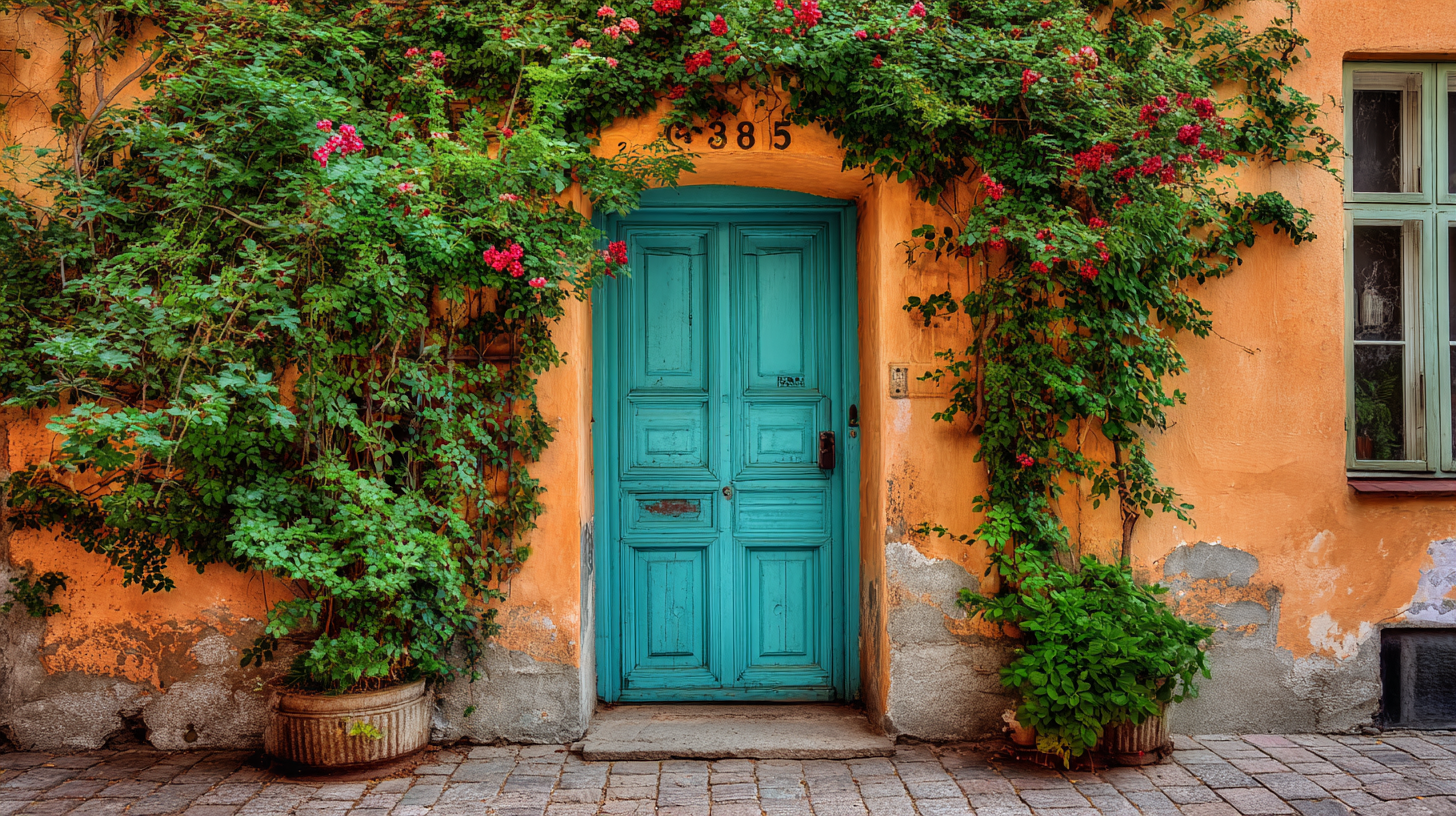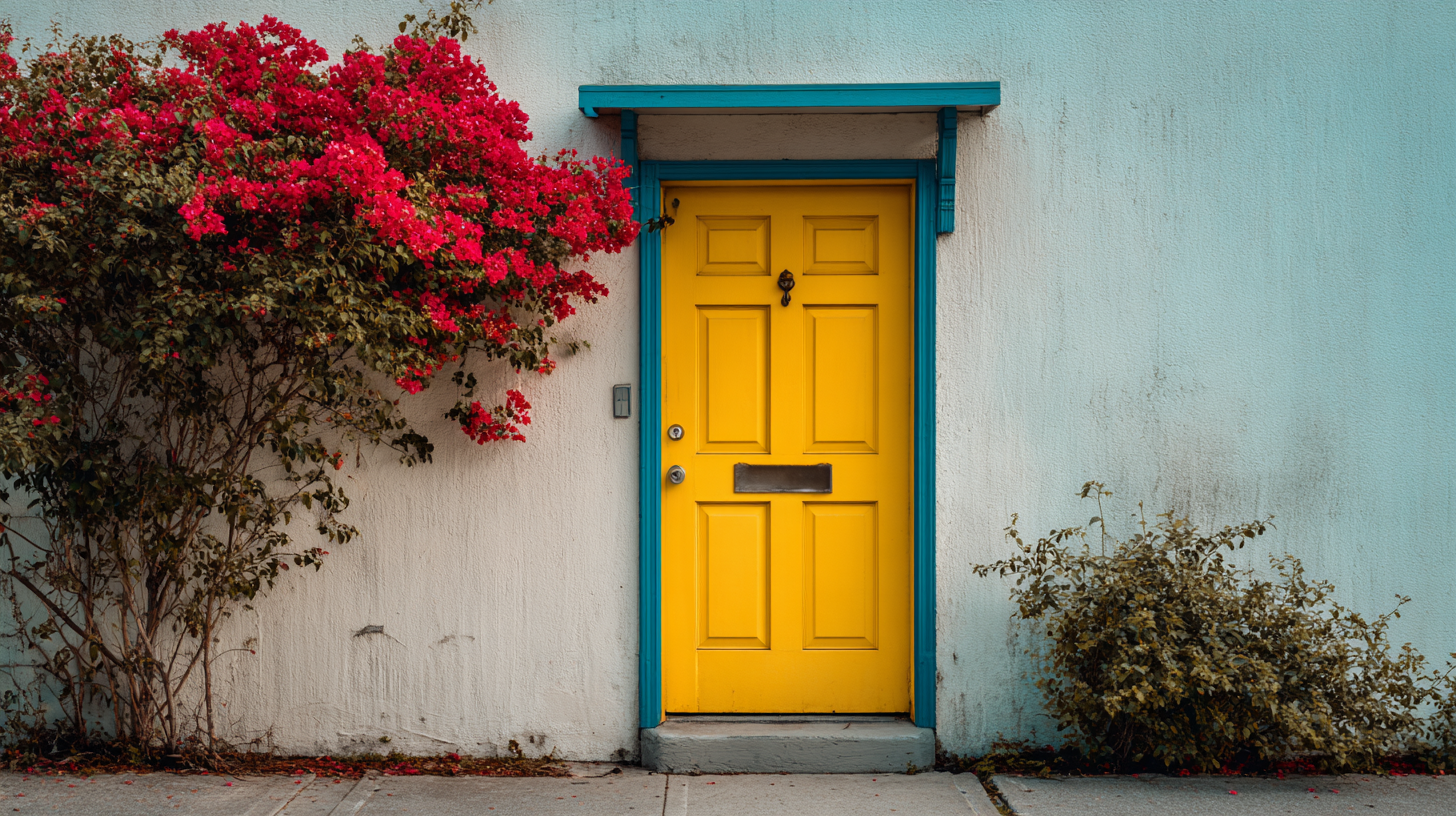Choosing the right outside door is a crucial decision that impacts both energy efficiency and home security, areas of increasing importance for homeowners today. According to the U.S. Department of Energy, nearly 30% of a home's heating and cooling energy is lost through doors and windows, making the selection of an energy-efficient outside door essential for reducing utility bills and environmental footprint. Furthermore, the FBI reports that nearly 2.5 million burglaries occur each year in the United States, with a significant number of these break-ins facilitated through inadequate doors. When investing in an outside door, homeowners must prioritize attributes such as material, insulation, and locking mechanisms to enhance both energy efficiency and security. This guide will aid you in navigating these critical considerations to ensure that your choice not only complements your home's aesthetic but also contributes to a more sustainable and secure living environment.

When selecting an outside door, several factors can significantly impact its energy efficiency. One of the primary considerations is the door's material. Solid wood, fiberglass, and steel are popular choices, each offering varying degrees of insulation. For instance, fiberglass doors often outperform their wooden and steel counterparts in energy efficiency due to their superior insulating properties and resistance to temperature fluctuations. Additionally, the thermal performance of the door can be enhanced with energy-efficient core materials that prevent heat transfer.
Another crucial element is the weather stripping and seals used around the doorframe. Quality seals minimize drafts and air leaks, which not only contributes to energy savings but also enhances comfort within the home.
Furthermore, the design of the door, including its fit and installation, plays a vital role in energy efficiency. A well-fitted door will ensure that less conditioned air escapes and that unconditioned air remains outside. Lastly, considering the glass used in door designs is essential; low-emissivity (Low-E) glass can significantly reduce heat loss while allowing natural light into the home, making it a smart choice for energy-conscious homeowners.

Choosing the right materials for your outside door is crucial for enhancing home security. According to the 2021 Home Security Report from the National Institute of Standards and Technology (NIST), homes with solid wood doors or steel doors have a significantly lower risk of forced entry compared to those with hollow core doors. Solid materials not only provide better resistance to blunt force attacks but also deter potential intruders who often look for easy targets.
In addition to the door material, the type of door frame and installation quality play a vital role in overall security. A study by the Door Security & Safety Foundation highlights that an unreinforced door frame can reduce the effectiveness of even the strongest door. Hence, investing in a reinforced door frame made from metal or a solid wood composite can greatly enhance your door's security performance. When choosing the perfect outside door, it's essential to consider these elements, ensuring materials work together to create a formidable barrier against break-ins, ultimately providing peace of mind for homeowners.
When evaluating door performance for energy efficiency and home security, insulating properties play a crucial role. According to the U.S. Department of Energy, doors can account for up to 15% of a home's energy loss. To ensure you choose the right door, consider materials that offer superior insulation, such as fiberglass or steel with foam cores. These materials not only resist heat transfer but also provide enhanced security features, reducing the likelihood of forced entry.
Tips: When selecting a door, look for one with a high R-value, indicating better insulation. A door with an R-value of 5 or higher is generally considered energy efficient. Additionally, check for weatherstripping and multi-point locking systems, which enhance both energy efficiency and security.
Another important factor is the door's energy label. The National Fenestration Rating Council (NFRC) provides ratings that help you understand how well a door can insulate compared to others. Aim for doors that have achieved Energy Star certification, denoting compliance with strict environmental standards while maximizing both security and energy savings. Remember, investing in a quality door now can significantly reduce your utility bills in the long run.

When selecting an outside door, balancing aesthetics and functionality is crucial. The right door not only enhances your home’s curb appeal but also plays a significant role in energy efficiency and security. Opt for materials like fiberglass or steel, which provide better insulation and durability than traditional wood. These materials can be designed to mimic the look of wood, allowing you to maintain your desired aesthetic without sacrificing performance.
Tip: Choose a door with a tight seal and energy-efficient glass elements to prevent drafts and heat loss. This ensures that your home's temperature remains stable year-round, reducing energy costs. Additionally, consider the style of your door in relation to your home’s architecture. A contemporary door design can complement modern homes, while a classic style may suit a more traditional facade.
Tip: Look for doors that are equipped with high-quality locks and security features, such as multi-point locking systems. This can significantly enhance your home’s security without compromising on style. Ensure that the color and finish of your door align with the overall theme of your house, creating a cohesive look that is both beautiful and practical.
When it comes to installing an outside door that enhances energy efficiency and home security, proper installation is paramount. First, ensure that you choose a high-quality door with energy-efficient ratings. Look for doors with insulated cores, weather stripping, and tight seals around the edges, as these features significantly reduce heat transfer and air leakage. During installation, pay attention to the fit; a door that is too tight or loosely hung can compromise both insulation and security. Levels and shims are your best friends in achieving a proper alignment, minimizing gaps that could lead to energy loss.
Additionally, enhancing security should be a key focus during the installation process. Opt for robust hinges and a high-quality deadbolt lock, as these components provide added protection against forced entry. Reinforce the door frame with a strike plate and ensure it is securely anchored, making it difficult for intruders to break in. Consider the use of smart locks and outdoor cameras to further bolster security, offering peace of mind. By combining these installation tips with energy-efficient door choices, you’ll create a barrier that is not only functional but also a protective shield for your home.
| Door Type | Material | Energy Efficiency Rating | Security Features | Average Cost ($) |
|---|---|---|---|---|
| Fiberglass Door | Fiberglass | R-5 | Multi-point locking system | 800 |
| Steel Door | Steel | R-6 | Reinforced frame, smart lock | 600 |
| Wood Door | Wood | R-4 | Deadbolt, reinforced hinges | 700 |
| Composite Door | Composite | R-5.5 | Dual-layer locking | 750 |